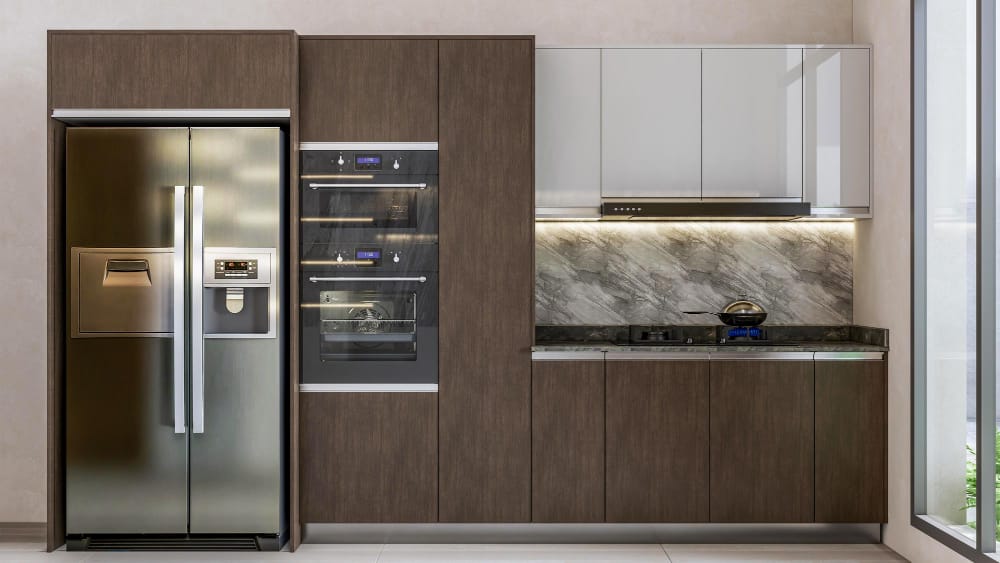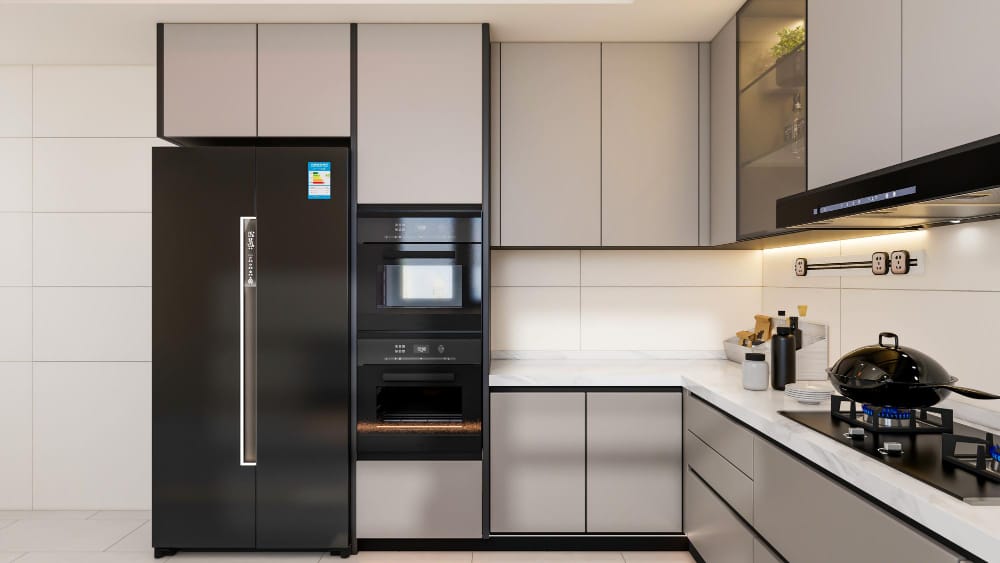Your kitchen cabinets aren’t just storage — they’re the backbone of your design. Choosing the right door style can determine the room’s character, workflow, and long-term satisfaction.
To help you make confident, practical decisions, this trendy kitchen cabinet door ideas guide breaks down each stage of cabinet door selection — from material choice to finish coordination — in an easy-to-follow process trusted by professional designers.
Step 1: Define Your Kitchen’s Design Intent
Before selecting a cabinet style, ask: What’s the personality of your kitchen?
Modern Minimalist: Think flat panels, hidden hardware, and matte tones.
Warm Contemporary: Try light-stained wood with smooth-grain finishes.
Bold Modern: Go for color contrast — dark cabinets paired with pale counters.
Defining your aesthetic narrows down your choices and helps maintain visual cohesion.
Step 2: Choose Your Cabinet Construction
The foundation of every door style lies in its structure.
| Type | Description | Best For |
|---|---|---|
| Slab (Flat-Panel) | Smooth surface with no frames | Modern and minimalist kitchens |
| Shaker | Subtle frame with clean lines | Transitional and modern farmhouse spaces |
| Recessed Panel | Sleek depth without ornamentation | Balanced modern-traditional styles |
| Glass-Front | Adds openness and display options | Upper cabinets or accent zones |
Pro Tip: For ultra-modern appeal, consider frameless (European-style) cabinet boxes — they maximize storage and create tight, seamless lines.
Step 3: Select the Right Material
Material choice impacts cost, durability, and appearance.
| Material | Pros | Considerations |
|---|---|---|
| MDF (Medium-Density Fiberboard) | Smooth finish, paint-friendly | Avoid excess moisture exposure |
| Plywood | Lightweight yet durable | Slightly higher cost |
| Solid Wood | Natural grain, long lifespan | More maintenance required |
| Thermofoil / Laminate | Easy to clean, affordable | Limited refinishing options |
Step 4: Coordinate Finishes and Colors
Modern cabinetry thrives on tone balance.
Pair warm wood cabinets with cool countertops for contrast.
Match cabinet undertones with flooring (warm or cool hues).
Consider mixing finishes — matte lowers with glossy uppers for dynamic layering.
In 2025, designers are gravitating toward soft natural palettes — mushroom, clay, sand, and greige — to create timeless serenity.
Step 5: Select Hardware (or Skip It Entirely)
Minimalist designs often favor handle-free solutions such as integrated grooves or push-latch mechanisms. For kitchens that need tactile accents, choose brushed or satin hardware in finishes like nickel, bronze, or matte black.
Hardware should feel intentional — not decorative.
Step 6: Integrate with Your Overall Remodel
Your cabinet style shouldn’t exist in isolation. Coordinate with flooring, backsplash, and lighting for consistency across materials and colors.
When executing a full remodel, working with experienced kitchen remodelers in Sacramento helps ensure precise measurements, balanced proportions, and seamless installation that brings your design vision to life.
Step 7: Don’t Forget Functionality
Even the most beautiful cabinetry fails if it doesn’t work practically.
Use soft-close hinges for durability.
Add pull-out shelving for accessibility.
Incorporate drawers instead of deep cabinets where possible.
A smart design functions as beautifully as it looks.
Builder’s Notes
Designing your ideal kitchen starts with choosing cabinets that align with your lifestyle and design goals. By following these seven steps, you can confidently select door styles that elevate both form and function.
👉 Remember: great design is deliberate. Every detail — from grain direction to hinge type — plays a role in how your kitchen feels and performs.

